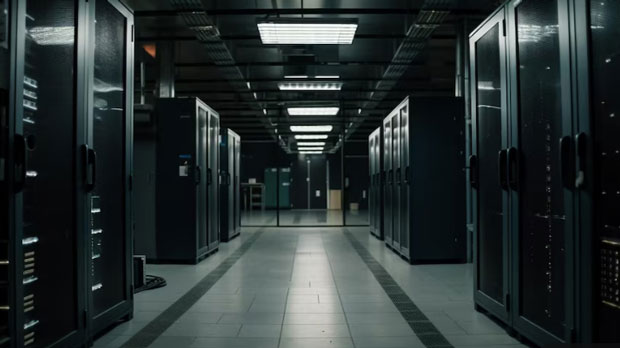In the evolving world of network management, proxy servers have become an indispensable tool for both personal and business applications. Traditional proxies have been in use for years, providing essential services such as anonymity, security, and access control. However, with the rise of Smart Proxy technology, a more advanced and efficient solution is now available. Smart Proxies offer enhanced security, faster performance, and better scalability compared to traditional proxies. This article will explore in-depth the various advantages that Smart Proxies have over traditional proxies, helping businesses and individuals understand why this newer technology is becoming a preferred choice. 1. Enhanced SecuritySecurity is a major concern for businesses and individuals when it comes to internet browsing, data transmission, and network interactions. Traditional proxies, while effective at providing basic privacy features, are vulnerable to a range of security threats, such as data leaks, hacking attempts, and unauthorized access. These security flaws are often due to the limited encryption protocols and outdated protection mechanisms embedded in traditional proxies.Smart Proxies, on the other hand, incorporate advanced encryption algorithms, multi-layered security protocols, and real-time monitoring to safeguard sensitive information. With the ability to detect and mitigate security threats instantly, Smart Proxies offer a higher level of protection against cyber-attacks and unauthorized data exposure. This enhanced security is particularly crucial for industries that handle sensitive data, such as finance, healthcare, and e-commerce.2. Faster PerformanceWhen comparing the performance of Smart Proxies to traditional proxies, speed and efficiency are critical factors. Traditional proxies are often slower due to their reliance on static IP addresses and limited routing systems. As a result, they can create bottlenecks that slow down internet access, affecting productivity and user experience.Smart Proxies employ advanced algorithms that intelligently route traffic based on real-time data, optimizing speed and reducing latency. This dynamic routing system ensures that users experience faster loading times and smoother connections, even when accessing high-demand content or services. Whether for web scraping, content delivery, or video streaming, Smart Proxies can significantly enhance the user experience by providing faster and more reliable performance.3. Scalability and FlexibilityOne of the most significant challenges with traditional proxies is scalability. As a business grows, the demand for more bandwidth and network resources increases. Traditional proxies may not be able to handle the increased load efficiently, leading to system slowdowns and potential outages. Scaling traditional proxies often requires extensive manual configurations and additional hardware, which can be both time-consuming and costly.Smart Proxies, however, are designed with scalability in mind. These proxies can easily adjust to changing network demands by automatically allocating resources as needed. This flexibility allows businesses to scale their operations without worrying about performance degradation or system failures. Additionally, Smart Proxies are highly adaptable to different environments, supporting both small and large-scale network infrastructures with ease.4. Advanced IP Rotation and Geo-TargetingFor businesses engaged in activities such as web scraping, ad verification, and competitive analysis, IP rotation is crucial for maintaining anonymity and avoiding detection. Traditional proxies often rely on a small pool of static IP addresses, which makes it easy for websites to identify and block them.Smart Proxies utilize dynamic IP rotation, frequently changing IP addresses to maintain anonymity and bypass geo-restrictions. This method ensures that users can access content from different regions without the risk of being blocked or flagged as suspicious. Furthermore, Smart Proxies offer advanced geo-targeting capabilities, allowing users to select specific locations from which they want to route their traffic. This feature is especially beneficial for businesses looking to target specific markets or regions with localized content and services.5. Cost-EffectivenessWhile Smart Proxies may appear more expensive than traditional proxies at first glance, they can actually be more cost-effective in the long run. Traditional proxies often require additional hardware, software, and manual configurations, which can add up to significant upfront and maintenance costs. Furthermore, the limited scalability of traditional proxies may lead to the need for frequent upgrades or replacements as the business expands.Smart Proxies, being cloud-based and automated, eliminate the need for extensive infrastructure and maintenance. The ability to scale resources as needed ensures that businesses only pay for the services they use, rather than overpaying for unused bandwidth or resources. This pay-as-you-go model offers a more economical solution for businesses, especially those with fluctuating traffic demands.6. Better Bypass CapabilitiesOne of the core benefits of Smart Proxies is their ability to bypass restrictions and access content that may otherwise be blocked or restricted by geographic location, IP address, or other filtering mechanisms. Traditional proxies often fail to bypass sophisticated blocking techniques employed by websites, especially those that use advanced anti-proxy measures.Smart Proxies employ cutting-edge bypass techniques, such as advanced fingerprinting evasion and smart routing, to access restricted content and bypass detection systems. This makes them ideal for activities such as data scraping, ad verification, and market research, where accessing blocked or limited content is a necessity.7. Real-Time Analytics and MonitoringWith Smart Proxies, businesses and individuals gain access to real-time analytics and monitoring features that help optimize network usage and improve overall performance. Traditional proxies typically lack these advanced monitoring tools, leaving users without insights into traffic patterns, resource consumption, or potential vulnerabilities.Smart Proxies provide detailed analytics that allow users to track and optimize their proxy usage, providing valuable insights into how traffic is being routed, where bottlenecks occur, and how resources are being allocated. These real-time insights help businesses make informed decisions regarding network management and improve overall efficiency.While traditional proxies have served their purpose over the years, the growing demand for more secure, faster, and scalable solutions has made Smart Proxies the new standard in network management. With advanced security features, enhanced performance, scalability, and cost-effectiveness, Smart Proxies offer clear advantages over their traditional counterparts. By adopting Smart Proxies, businesses and individuals can enjoy a more seamless, efficient, and secure online experience, ensuring that they remain competitive and protected in today’s rapidly changing digital landscape.
Jun 16, 2025
![arrow]()



















































